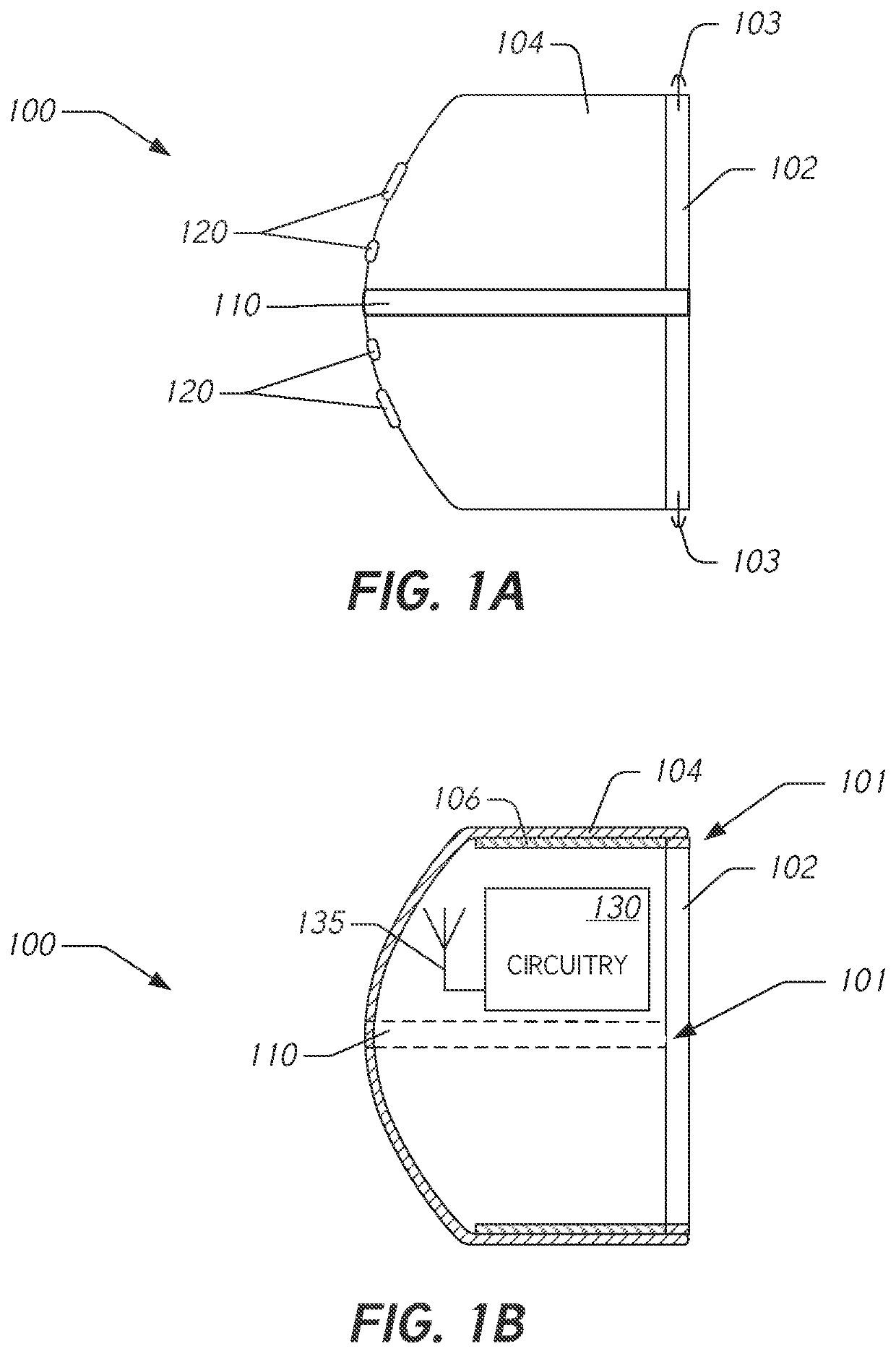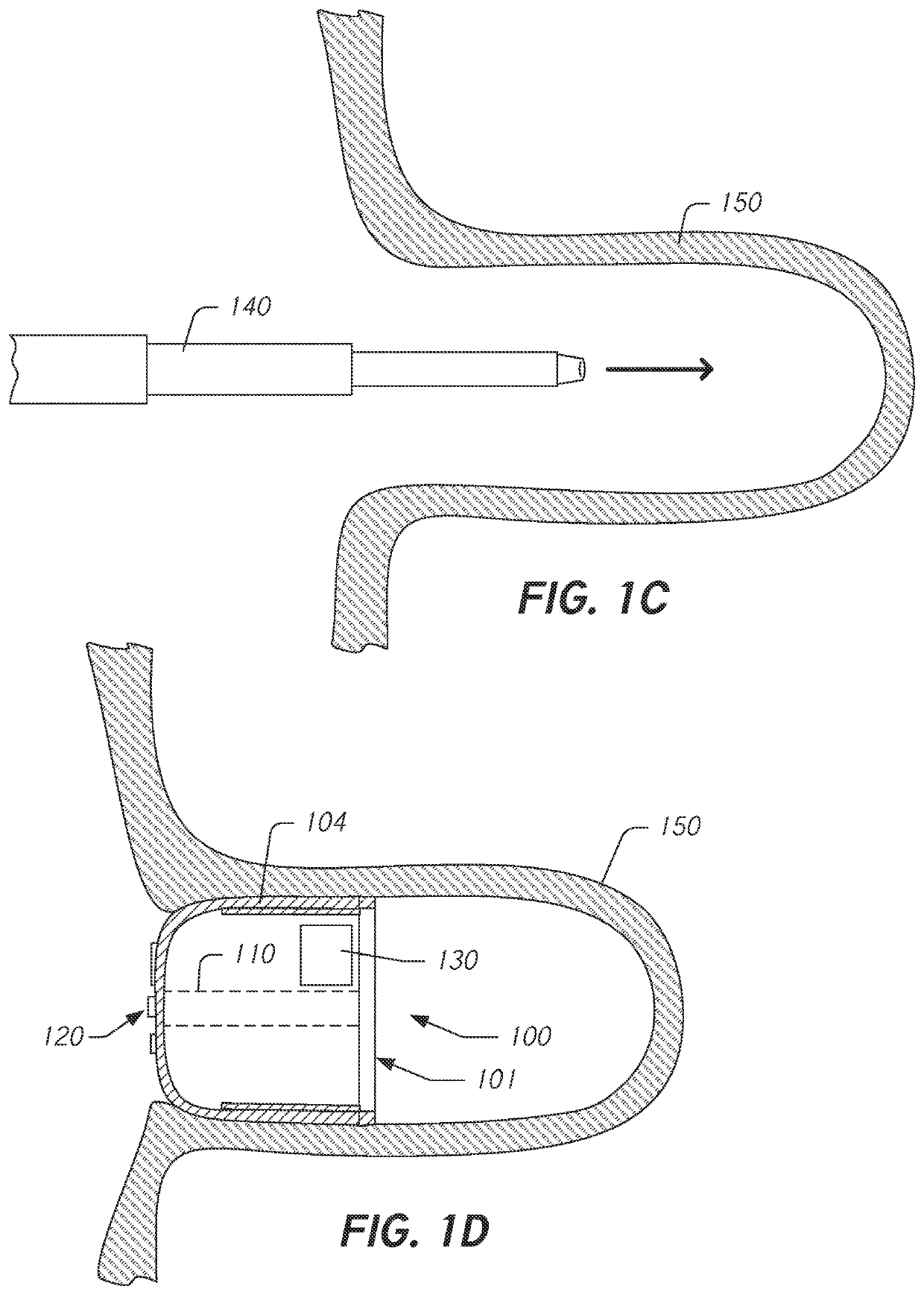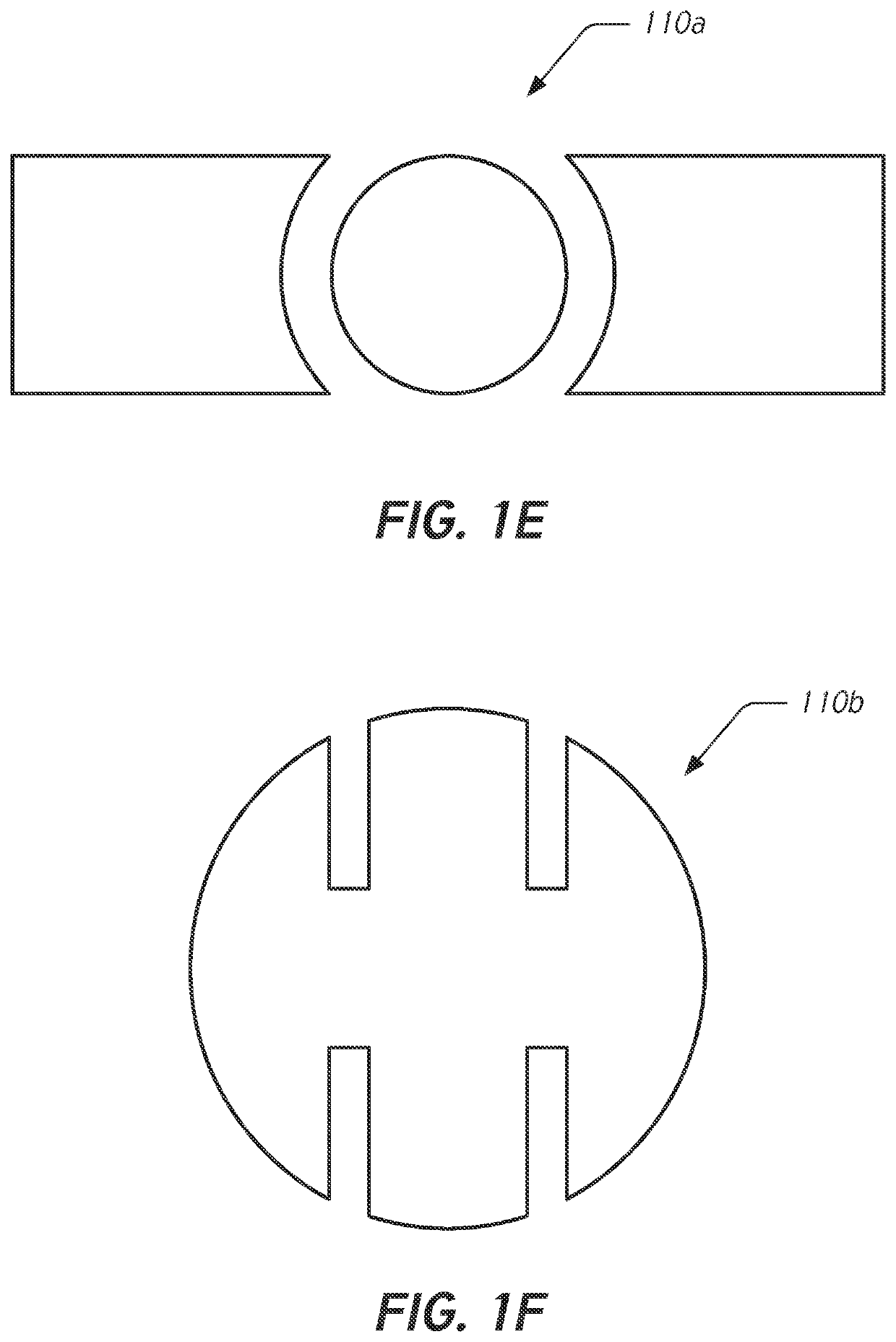Occluder with self-powered sensors
a self-powered, sensor technology, applied in the field of occluders with self-powered sensors, can solve the problems of increasing the risk of blood clot formation, peri-operative atrial fibrillation, and the association of open heart surgery with a very high incidence of peri-operative atrial fibrillation, so as to inhibit the passage of blood
- Summary
- Abstract
- Description
- Claims
- Application Information
AI Technical Summary
Benefits of technology
Problems solved by technology
Method used
Image
Examples
Embodiment Construction
[0037]The headings provided herein are for convenience only and do not necessarily affect the scope or meaning of any of the claimed embodiments.
Overview
[0038]Evidence points to the left atrial appendage (LAA) as the primary origin of thrombus formation particularly in the presence of non-valvular atrial fibrillation (AF). Because a major risk of non-valvular AF is an ischemic stroke, preventing thrombus formation in the LAA can be beneficial. Stroke prevention in patients with non-valvular AF may involve the use of oral anticoagulants or antiplatelet agents or LAA occlusion or exclusion (e.g., LAA closure).
[0039]LAA or other appendage or aneurysm closure devices can be designed and configured in a variety of ways. In some applications, closure devices can be at least one of an occluder and / or a clamp.
[0040]Occluders can be designed and configured to fill the LAA or other appendage, bulge, or aneurysm to close the cavity to thrombus formation and / or to prevent thrombi in the cavity ...
PUM
 Login to View More
Login to View More Abstract
Description
Claims
Application Information
 Login to View More
Login to View More - R&D
- Intellectual Property
- Life Sciences
- Materials
- Tech Scout
- Unparalleled Data Quality
- Higher Quality Content
- 60% Fewer Hallucinations
Browse by: Latest US Patents, China's latest patents, Technical Efficacy Thesaurus, Application Domain, Technology Topic, Popular Technical Reports.
© 2025 PatSnap. All rights reserved.Legal|Privacy policy|Modern Slavery Act Transparency Statement|Sitemap|About US| Contact US: help@patsnap.com



